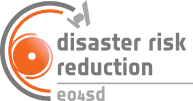World Bank – The Gambia – Training Sessions
Services supporting Disaster Risk Reduction in Greater Banjul
Due to its geographical location, the city of Banjul (The Gambia) is especially exposed to a combination of adverse effects of disasters, affecting to a population of about 400,000 people. Only by taking measures of improving the resilience of these communities the Government of The Gambia can protect the most vulnerable population.
The target of the collaboration was to inform future policy and investment decisions in the country to strengthen the resilience of the country’s short, but vulnerable coastline, and highly exposed urban population and assets. In addition, this activity would inform local stakeholders about the status of different monitoring systems. Furthermore, the services will include a component of capacity building to transfer the required knowledge to the local stakeholders to fully exploit the services and guarantee their sustainability in time.
Training Sessions took place on the 9th and 10th of December 2020. They consisted of a series of technical sessions focused on methodologies, applicability of Earth Observation techniques and benefits for the user. It congregated more than 20 people of different institutions, among others, local users like the National Disaster Management Agency (NDMA) and the Kanifing Municipal Council (KMC) as well as international organizations like the United Nations Office for Project Services (UNOPS), the African development Bank and the European Commission delegation in the country.
The first session included an introduction to the contribution of satellite EO to Disaster Response carried out by Philippe Bally (ESA) and Theodora Papadopoulou (ARGANS). They explained how EO contributes to Disaster Response and introduced the International Charter Space and Major Disasters. Moreover, highlights on coastal flood and bathymetry, terrain deformation and exposure mapping were provided and a demonstration exercise on outcomes and constraints in the use of the data was also provided.
The second session tackled in a more general way, how EO sources can bring up solutions. In it, InSAR techniques for monitoring ground deformation were exposed. Key fundaments/methods and success histories as well as the limitations on the techniques and ways forward were exposed when looking at coastal cities at risk as well as for assets exposed to hazards. A few considerations on how to use the data and verification and validation approaches, to end up with an overview of how Earth Observation can contribute to feeding the Platform for Environmental Data, by UNOPS, with an explanation of its objectives and main features.
Event category: Training
IFI: World Bank
Cluster´s partners involved: Planetek, ARGANS and Indra
Main user: Government of The Gambia
Other users involved in the session: Kanifing Municipal Council (KMC), Ministry of Forestry and the Environment of The Gambia (MOFEN), , Gambia tourism board, University of The Gambia, Gambia Ports Authority, National Disaster Management Agency (NDMA), European Commission Delegation in The Gambia, UNOPS, African Development Bank (ADB), National Environmental Agency, Department of Physical Planning, Bureau of statistics
Number of participants: 80
Date: 9-10/12/2020
Location: Online
Official language: English

